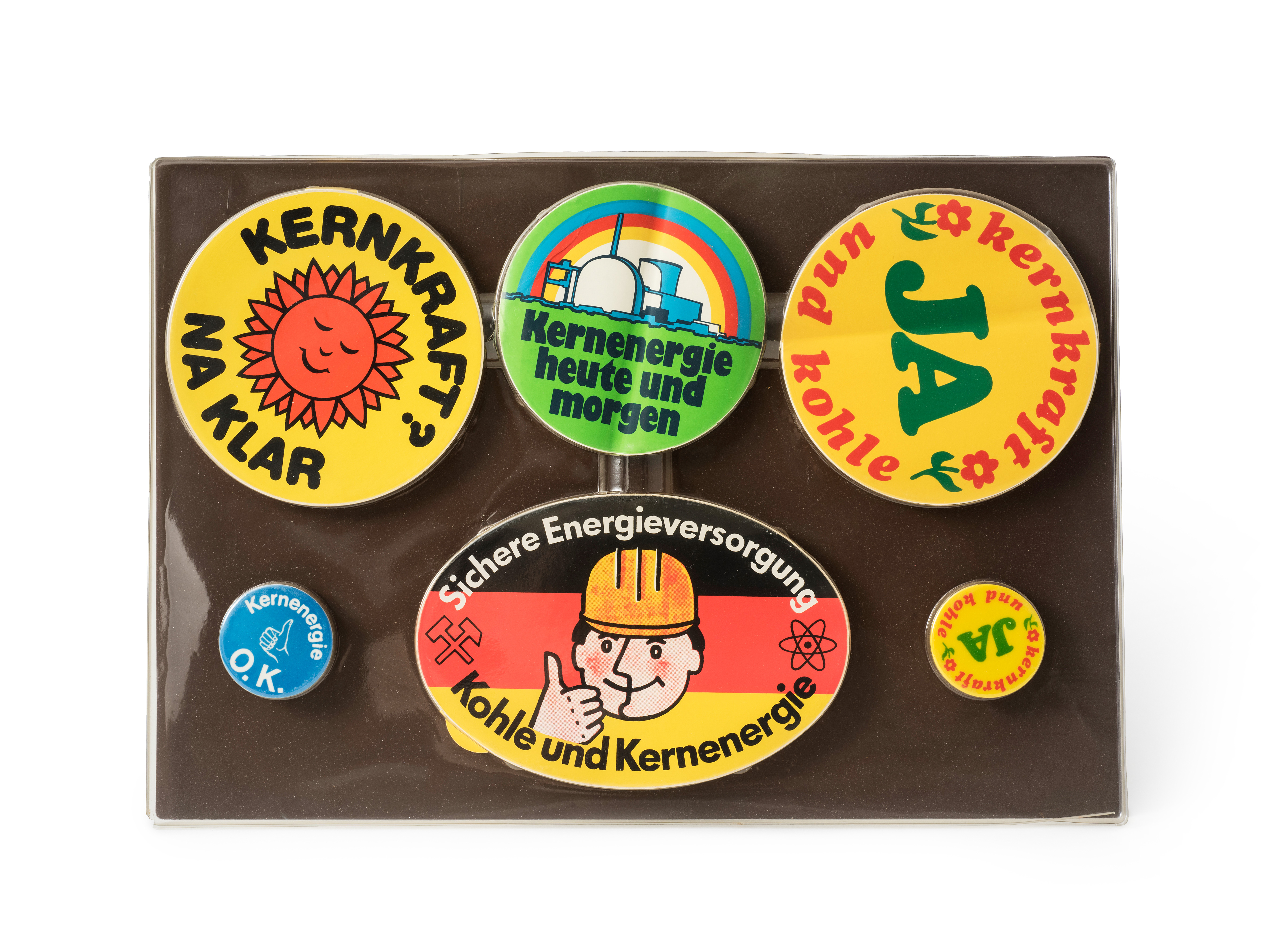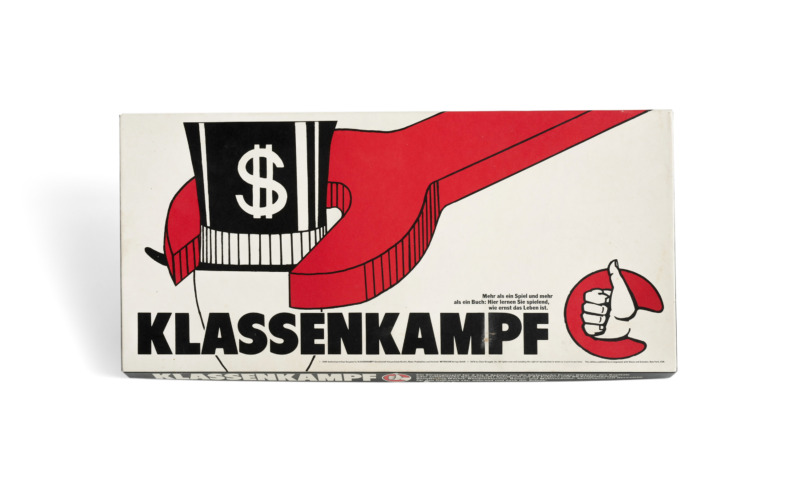This cutout sheet for a 1:350 scale model of a nuclear power plant with pressurized water reactor was produced in 1983 by Kraftwerk Union AG, which was founded in 1969 by Siemens and AEG.
On the back of the package, there are stickers that resemble, for example, the anti-nuclear sticker ” Nuclear Power? No thanks” from the 1970s with the slogan “Nuclear power? Of course,” or praise coal as a “secure energy supply”.

There were already a number of precursors to such toys in the 19th century: models were made at that time not only of steam engines, but also of railroads, and later of entire factory plants or, during the Nazi era, of the Reich’s autobahns.
These objects were marketed and given to children in a gender-specific way – technical toys, just like tin soldiers or war equipment, were given to boys, while dolls were given to girls. In this way, children were to be prepared for the later professions that were envisaged according to their gender. However, the things themselves are neutral or ambivalent in this respect. It is only the adults who endow them with gender-specific meanings with the aim that the new generation learns these and in turn passes them on to their own children.
It becomes clear here that toys are always a mirror not only of a society’s level of technical development, but also of its structures and world views.
The nuclear power plant model, however, as the stickers make clear, goes beyond the gender-specific influence on adolescents. It was intended, three years before the Chernobyl disaster, to portray a technology as safe to children, which was already facing plenty of headwind from the young anti-nuclear movement.

